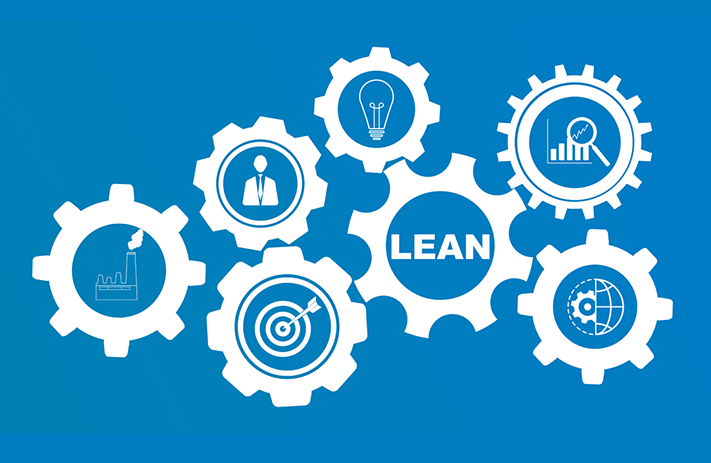
Click the button to start reading
Shared Decisions, Shared Success: Demystifying Democratic Leadership
In the vast sea of leadership styles, democratic leadership stands out like a lighthouse on a foggy night. It’s a beacon that guides organizations towards collaboration, engagement, and shared decision-making. But let’s be honest, it’s not all smooth sailing. There are challenges, like navigating the choppy waters of group dynamics or ensuring every voice is heard without turning the ship into a floating parliament.
This is where we come in. We’re here to demystify democratic leadership for you. By the time you finish this article, you’ll not only understand what democratic leadership is, but you’ll also know how to implement it, navigate its challenges, and harness its benefits.
Confused about democratic leadership? Don’t worry, you’re not alone. It’s a complex topic, filled with nuances and subtleties. But fear not, dear reader. Consider this article your compass, guiding you through the intricacies of democratic leadership. So, are you ready to set sail on this journey? Let’s dive in.

So, What Exactly is Democratic Leadership?
Imagine you’re part of a team where your ideas matter just as much as your boss’s. Sounds refreshing, doesn’t it? That’s democratic leadership for you. It’s a leadership style where everyone gets a say in the decision-making process. But don’t get it twisted, it’s not a free-for-all. There’s still a leader who makes the final call, but only after considering everyone’s input.
Now, you might be thinking, “Isn’t that how all teams should work?” Well, not exactly. You see, democratic leadership is quite different from other leadership styles.
Take autocratic leadership, for instance, where the leader makes all the decisions without input from the team. Or laissez-faire leadership, where the leader takes a backseat and lets the team make all the decisions. Democratic leadership strikes a balance between these extremes, creating a harmonious blend of guidance and freedom.

Exploring the Leadership Landscape: Different Styles of Leadership
Now, before we delve deeper into the world of democratic leadership, let’s take a brief detour. You see, understanding democratic leadership becomes a whole lot easier when you have a broader picture of the leadership landscape. It’s like understanding the unique beauty of a rose by comparing it with a sunflower or a daisy.
So, let’s take a moment to explore other leadership styles and see how they contrast with democratic leadership. Buckle up, because we’re about to embark on a quick tour of the leadership landscape.
Autocratic Leadership: The Solo Act
Imagine a one-man band, playing every instrument, controlling every note. That’s autocratic leadership for you. Autocratic leaders make decisions without input from their team. They’re in control, and they call the shots. It’s efficient, yes, but it can also stifle creativity and lower team morale.
Laissez-Faire Leadership: The Jam Session
On the other end of the spectrum, we have laissez-faire leadership. It’s like a jam session where everyone plays their own tune. Laissez-faire leaders take a hands-off approach, giving their team the freedom to make decisions. While this can foster creativity and independence, it can also lead to a lack of direction and cohesion.
Transformational Leadership: The Symphony Orchestra
Imagine a symphony orchestra, where the conductor inspires each musician to perform at their best to create a harmonious masterpiece. That’s transformational leadership. Transformational leaders inspire and motivate their team to exceed their own individual performance goals for the greater good of the organization.
Transactional Leadership: The Choir Practice
Think of a choir practice, where each singer is rewarded or penalized based on their performance. That’s transactional leadership. Transactional leaders operate on a reward and punishment system. It’s effective for achieving specific tasks but can limit innovation and personal growth.
Now, back to our main act, democratic leadership. It’s like a band where everyone contributes to the songwriting process. There’s a lead singer, yes, but every band member’s input is valued. It’s this harmonious blend of guidance and collaboration that makes democratic leadership so special.
Remember, no leadership style is a one-size-fits-all solution. The best leaders are like music conductors, knowing when to take the solo, when to let the team jam, and when to guide the orchestra to a symphony. It’s all about striking the right chord at the right time.

The Nitty-Gritty of Democratic Leadership: Characteristics and Traits
Now that you’ve got a handle on leadership styles let’s delve into the nitty-gritty of democratic leadership: the characteristics and traits that define it.
Open Communication
In a democratic leadership environment, communication flows freely. It’s like a bustling marketplace of ideas, where everyone’s thoughts and opinions are welcomed and valued. Remember the time when you had a brilliant idea during a team meeting but didn’t voice it out because you felt it wouldn’t be appreciated? Well, that’s less likely to happen in a democratic leadership setting.
Active Participation
Democratic leadership isn’t a spectator sport. It’s all about active participation. Think of it like a potluck dinner, where everyone brings a dish to the table. Similarly, in a democratic leadership setting, everyone brings their ideas and opinions to the decision-making table.
Empowerment
Democratic leaders don’t just lead; they empower. They’re like the coach of a basketball team, guiding their players and helping them reach their full potential. They believe in the capabilities of their team members and give them the opportunity to shine.
Respect for Diversity
Democratic leadership thrives on diversity. It’s like a vibrant tapestry woven from different threads of ideas, experiences, and perspectives. This respect for diversity fosters a culture of inclusivity and mutual respect.
Let’s take a real-life example to illustrate these characteristics. Consider the case of Google, a company known for its democratic leadership style.
Google encourages its employees to spend 20% of their time on personal projects, an initiative that has led to the creation of some of Google’s most innovative products, like Gmail and AdSense. This example perfectly encapsulates the essence of democratic leadership: open communication, active participation, empowerment, and respect for diversity.

Why Democratic Leadership Rocks: Advantages
Let’s face it, who doesn’t love being part of a team where your ideas are valued and your voice is heard? That’s one of the many reasons why democratic leadership rocks. But let’s not stop there, let’s dive into some more benefits of this leadership style.
- Boosts Creativity and Innovation
Democratic leadership is like a creativity booster shot. When everyone’s ideas are welcomed, you’re bound to get a melting pot of innovative solutions. Remember the Google example we talked about earlier? That’s democratic leadership sparking innovation right there. - Enhances Job Satisfaction
Imagine working in an environment where you’re not just a cog in the machine, but an active participant in decision-making. Feels good, doesn’t it? That’s what democratic leadership brings to the table – a sense of ownership and involvement that can significantly enhance job satisfaction. - Fosters a Learning Environment
In a democratic leadership setting, every decision-making session is a learning opportunity. It’s like being in a classroom where everyone is both a teacher and a student, learning from each other’s experiences and perspectives. - Builds Stronger Teams
Democratic leadership is like the glue that holds a team together. It fosters a sense of camaraderie and mutual respect, building stronger, more cohesive teams.

Not All Sunshine and Rainbows: Disadvantages of Democratic Leadership
Now, as much as we’d love to tell you that democratic leadership is all sunshine and rainbows, that wouldn’t be entirely true. Like any other leadership style, it has its share of challenges.
- Decision-Making Can Be Slow
When everyone has a say, decision-making can take time. It’s like trying to decide on a movie to watch with a group of friends – by the time you agree on something, you’ve probably missed half the movie.
Solution: Set clear guidelines for decision-making. Establish a timeframe for discussions and make sure everyone is aware of it. It’s like setting a timer for your group discussion – it keeps things on track and ensures decisions are made in a timely manner.
- Not Suitable for All Situations
Democratic leadership may not be the best fit in a crisis situation where quick decisions are needed. It’s like being on a sinking ship – you don’t have time to vote on the best way to plug the leak.
Solution: Understand when to switch leadership styles. While democratic leadership is great for fostering creativity and engagement, there may be situations where a more autocratic approach is needed. It’s like being a chameleon, adapting to the environment as needed.
- Risk of Unproductive Discussions
With multiple voices and opinions, discussions can sometimes turn unproductive. It’s like having too many cooks in the kitchen, each with their own recipe for the perfect soup.
Solution: Facilitate discussions effectively. Ensure everyone gets a chance to speak and that their opinions are heard. It’s like being a conductor of an orchestra, making sure every instrument plays its part to create a harmonious melody.
- Potential for Conflict
When everyone has a say, there’s also a potential for conflict. It’s like a family dinner where everyone has a strong opinion on a controversial topic.
Solution: Foster a culture of respect and understanding. Encourage team members to appreciate diverse opinions and resolve disagreements in a constructive manner. It’s like setting ground rules for a debate – everyone gets to voice their opinion, but it has to be done respectfully.
Famous Faces of Democratic Leadership: Examples
Ever heard of the phrase, “Great leaders don’t tell you what to do, they show you how it’s done?” Well, let’s take a look at some famous faces who’ve shown us how democratic leadership is done.
Nelson Mandela: A Beacon of Democratic Leadership
Nelson Mandela, the former President of South Africa, is a shining example of democratic leadership. He believed in the power of consensus and often sought the opinions of his team before making decisions. His leadership style not only ended apartheid but also united a deeply divided nation. Now, that’s democratic leadership at its finest!
Indra Nooyi: Leading with Empathy and Inclusivity
Indra Nooyi, the former CEO of PepsiCo, is another leader who embraced democratic leadership. She believed in the power of collective wisdom and often sought the opinions of her team. Her leadership style fostered a culture of inclusivity and innovation at PepsiCo, leading to some of the company’s most successful initiatives.

Democratic Leadership: Not Just for Politicians
Now, you might be thinking, “Democratic leadership sounds great, but I’m not a politician or a CEO. Can I still be a democratic leader?” The answer is a resounding yes! Democratic leadership isn’t just for politicians or CEOs; it can be applied in various contexts, from businesses to schools to non-profit organizations.
Democratic Leadership in Schools: Fostering a Love for Learning
Take the example of a school principal who practices democratic leadership. By involving teachers, students, and parents in decision-making, they foster a sense of community and engagement. This not only improves the school’s performance but also instills a love for learning among students.
Democratic Leadership in Small Businesses: Driving Innovation
Or consider a small business owner who embraces democratic leadership. By valuing the ideas and opinions of their team, they foster a culture of innovation and creativity. This not only drives the business’s growth but also improves job satisfaction among employees.
So, whether you’re a teacher, a business owner, or a team leader, democratic leadership has something to offer you. It’s a leadership style that values collaboration, encourages participation, and respects diversity.

How to Be a Democratic Leader: Tips and Tricks
So, you’re sold on democratic leadership and want to give it a shot. But where do you start? Don’t worry, we’ve got you covered. Here are some practical tips and tricks to help you become the democratic leader you aspire to be.
Foster Open Communication
Remember, democratic leadership is all about open communication. So, create an environment where everyone feels comfortable sharing their ideas and opinions. It’s like hosting a party where everyone feels welcome and valued.
Encourage Participation
Democratic leadership is not a spectator sport. So, encourage everyone to participate in the decision-making process. It’s like a group project where everyone has a role to play.
Respect Diversity
Democratic leadership thrives on diversity. So, value and respect the diverse ideas, experiences, and perspectives of your team. It’s like appreciating the different flavors in a mixed fruit salad.
Be Patient
Remember, democratic leadership can be slow, but it’s worth the wait. So, be patient and give everyone the time they need to voice their opinions. It’s like baking a cake – it takes time, but the end result is worth the wait.

Your Turn: How Will You Apply Democratic Leadership?
Now that you’ve got the lowdown on democratic leadership, it’s your turn to put it into practice. Think about how you can apply what you’ve learned in your own context. Maybe you’re a teacher who wants to involve students more in classroom decisions. Or perhaps you’re a team leader who wants to foster a more collaborative and inclusive team culture.
Whatever your context, we’d love to hear about your experiences and thoughts. So, go ahead, give democratic leadership a shot. And remember, every great leader was once a beginner. So, don’t be afraid to make mistakes and learn from them. After all, that’s what democratic leadership is all about – learning, growing, and succeeding together.
So, are you ready to embrace democratic leadership and steer your team towards success? We can’t wait to hear about your journey. Let’s keep the conversation going.
















